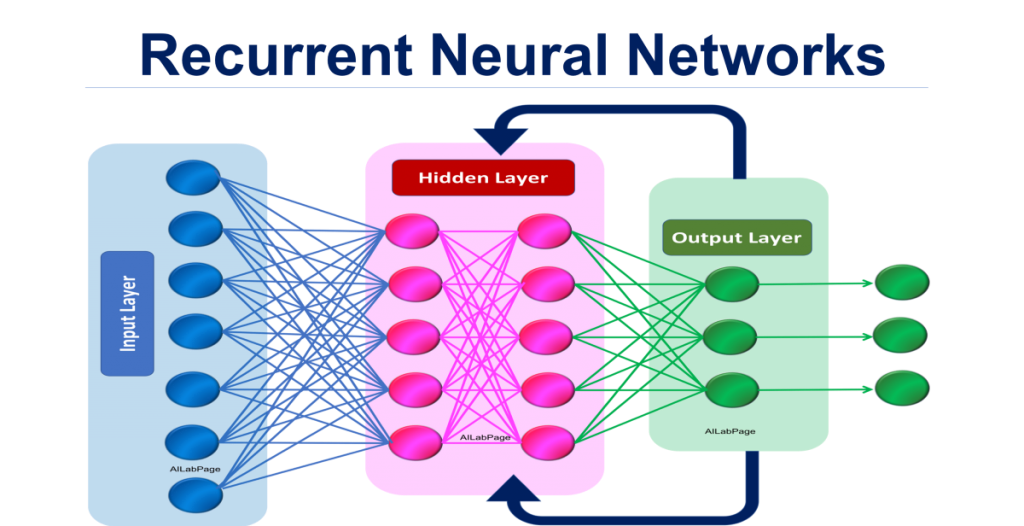
Have you ever wondered how language translation software like Google Translate works? Or how your phone’s predictive text feature knows what words to suggest next? The answer lies in a type of artificial intelligence known as a recurrent neural network (RNN).
Introducing RNNs
An RNN is a type of neural network that is designed to handle sequential data, making them particularly useful for tasks like speech recognition, text prediction, and language translation. Unlike traditional neural networks, which process data in a linear manner, RNNs are designed to remember previous inputs and use that information to inform their predictions.
To put it simply, an RNN works by taking in a sequence of inputs, one at a time, and processing each input while also retaining a “memory” of previous inputs. This memory, known as a hidden state, is updated with each new input and used to inform the network’s prediction for the next input in the sequence.
How do RNNs work?
At the heart of an RNN is a recurrent layer, which is made up of a series of interconnected nodes that pass information from one node to the next. Each node in the recurrent layer takes in two inputs: the current input, and the hidden state from the previous node.
The current input is processed using a set of weights and biases, just like in a traditional neural network. However, in an RNN, the output of each node is also fed back into the network as the hidden state for the next node in the sequence.
This allows the network to “remember” information from previous inputs and use that information to inform its predictions for future inputs. The result is a network that is able to process sequential data in a way that is both efficient and effective.
Applications of RNNs
RNNs have a wide range of applications in fields like natural language processing, speech recognition, and image captioning. Here are just a few examples:
- Language Translation: RNNs are used in software like Google Translate to translate text from one language to another. By processing each word in a sentence one at a time, the network is able to generate a translation that takes into account the context of the entire sentence.
- Text Prediction: The predictive text feature on your phone uses an RNN to generate suggestions for the next word in a sentence. By analyzing patterns in your previous text messages, the network is able to generate suggestions that are tailored to your writing style.
- Speech Recognition: RNNs are used in voice assistants like Siri and Alexa to recognize spoken commands. By processing each word in a sentence in sequence, the network is able to accurately transcribe spoken language into text.
Conclusion
In conclusion, recurrent neural networks are a powerful tool for processing sequential data. By using a memory mechanism to remember previous inputs, RNNs are able to generate accurate predictions for future inputs, making them an essential component of many AI applications. So the next time you use Google Translate or type a message on your phone, remember that you’re interacting with a complex neural network that is using the power of RNNs to make your life easier.
- Discover 7 Fascinating Careers in Game Design - October 14, 2024
- The Integration of AI and IoT: Enhancing Smart Systems - October 8, 2024
- Software Development Companies in Latin America and How To Choose One - October 1, 2024

